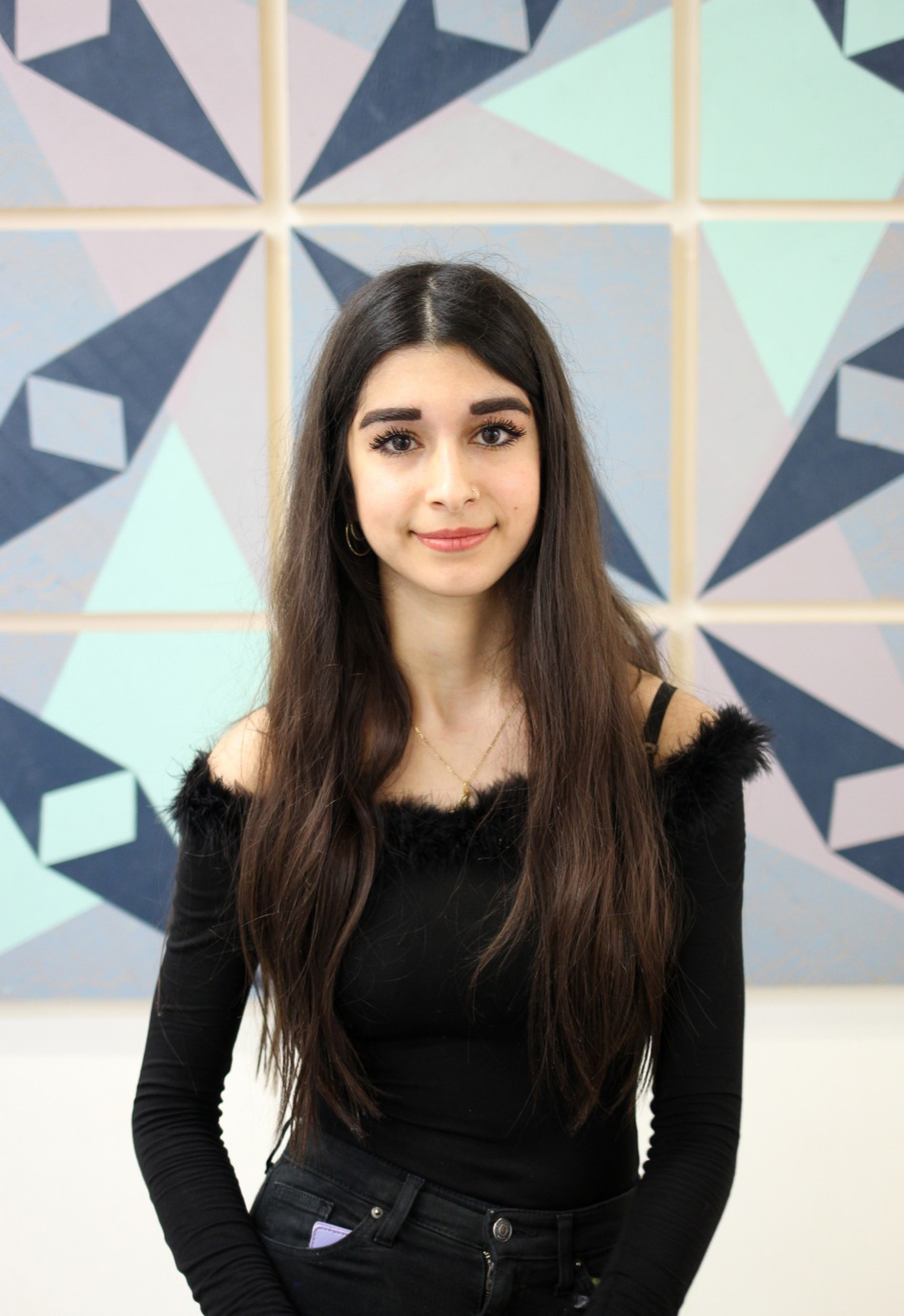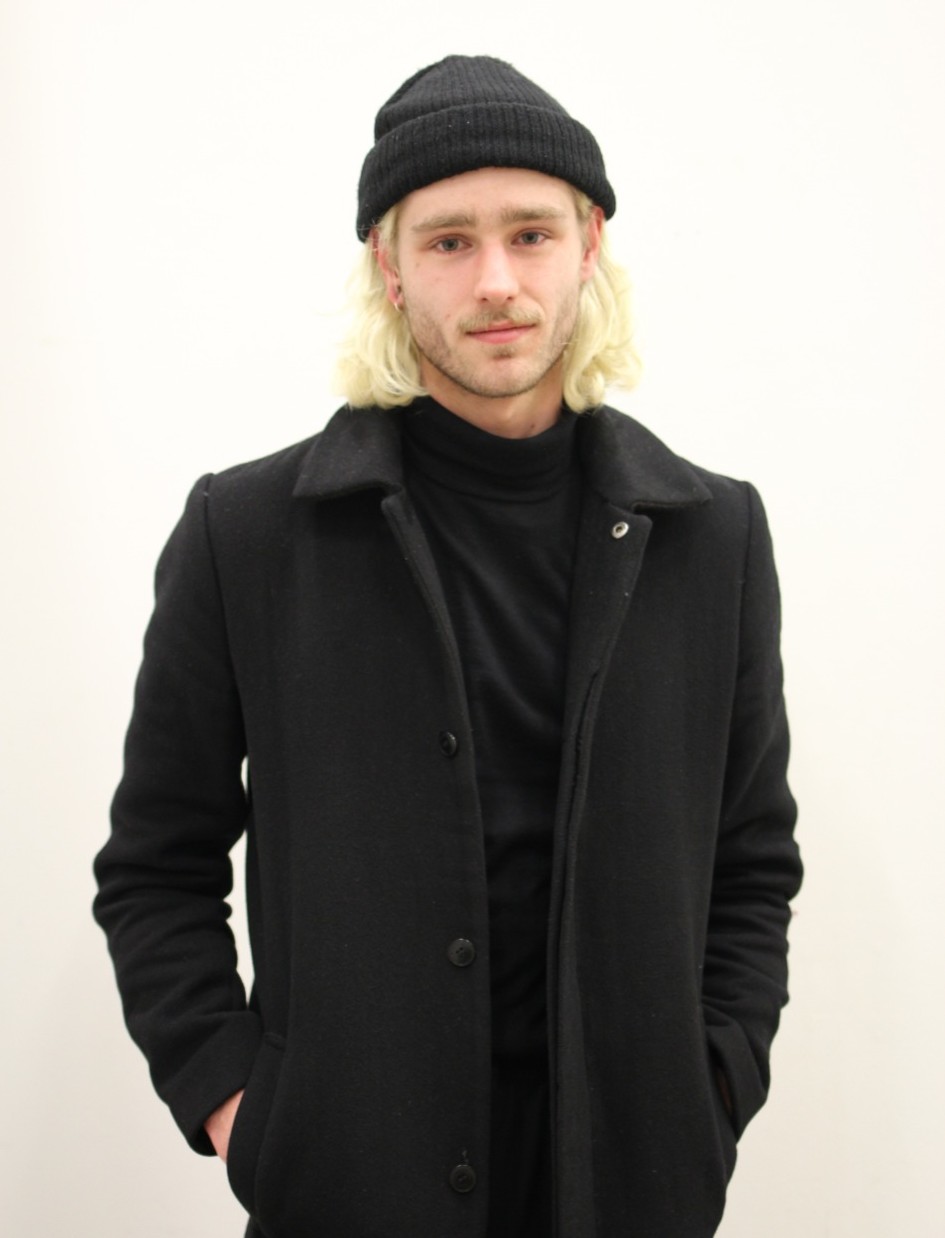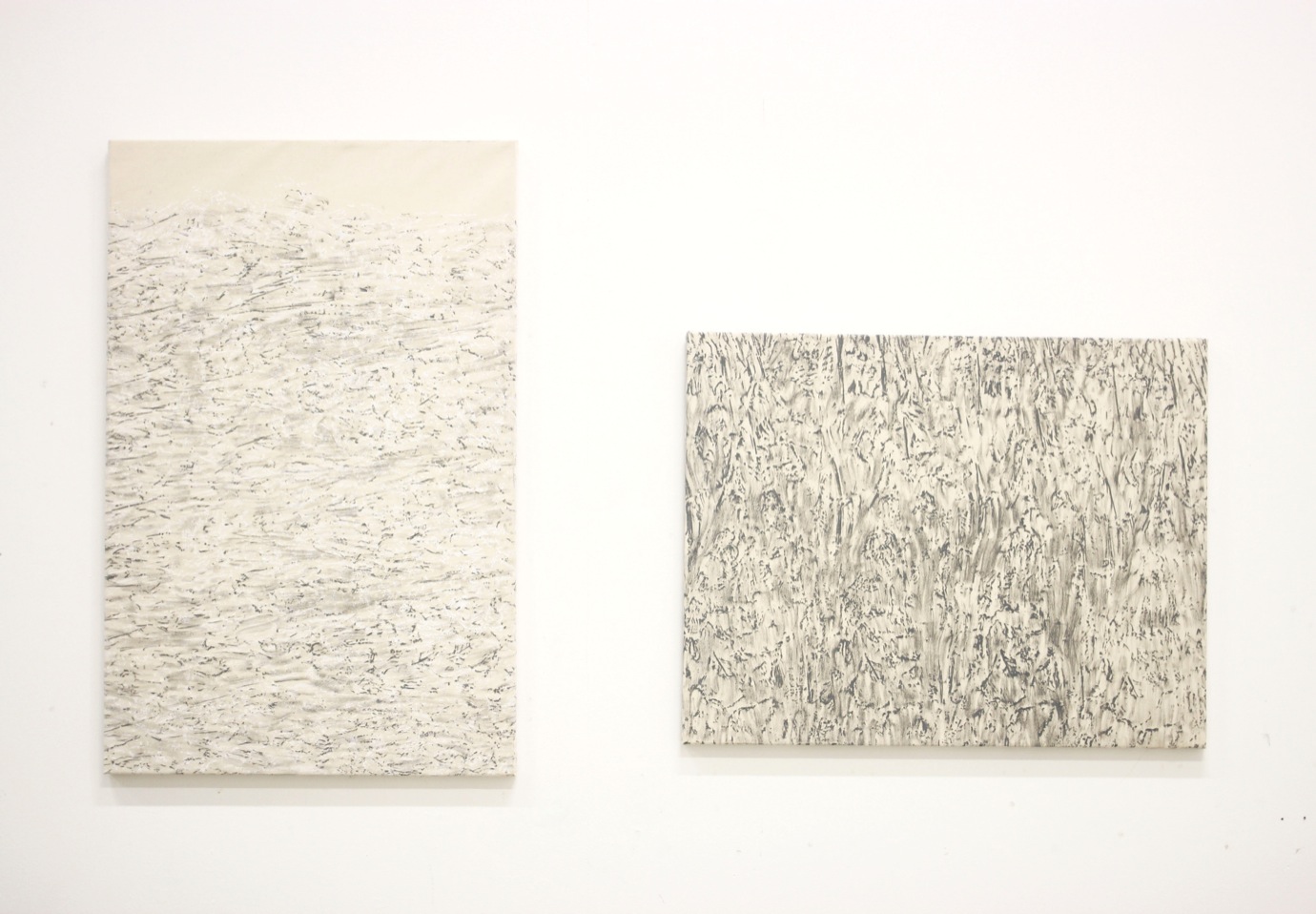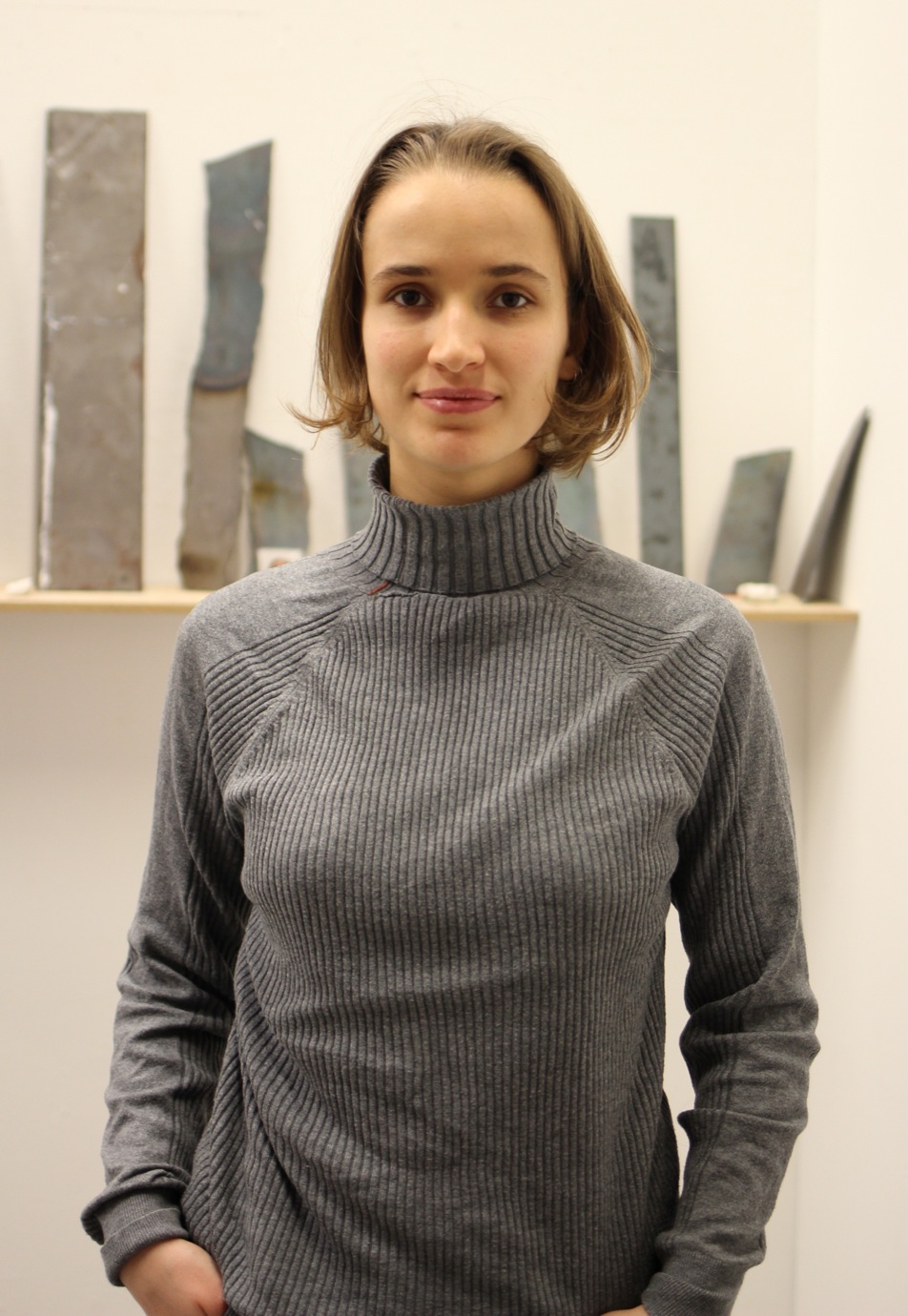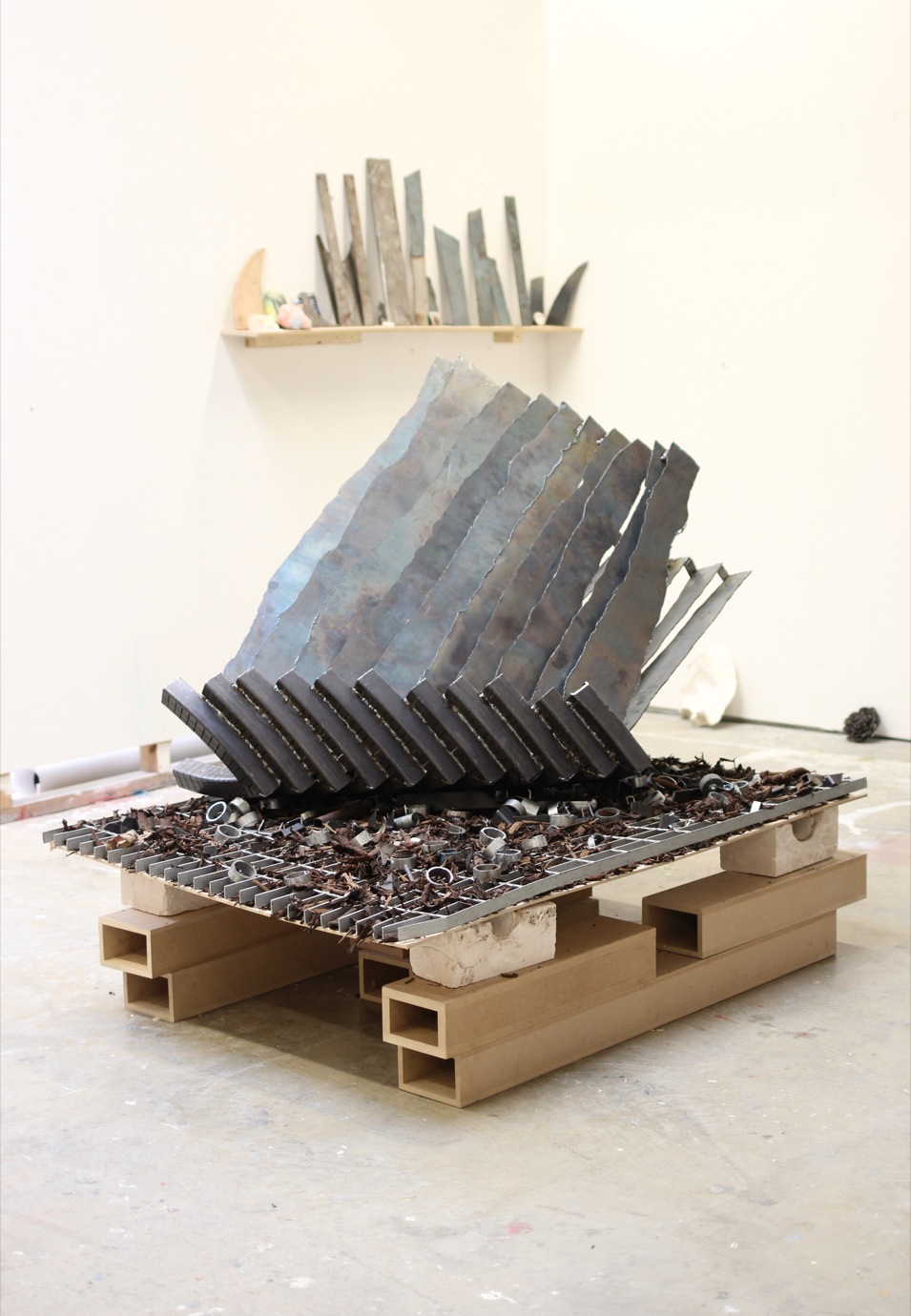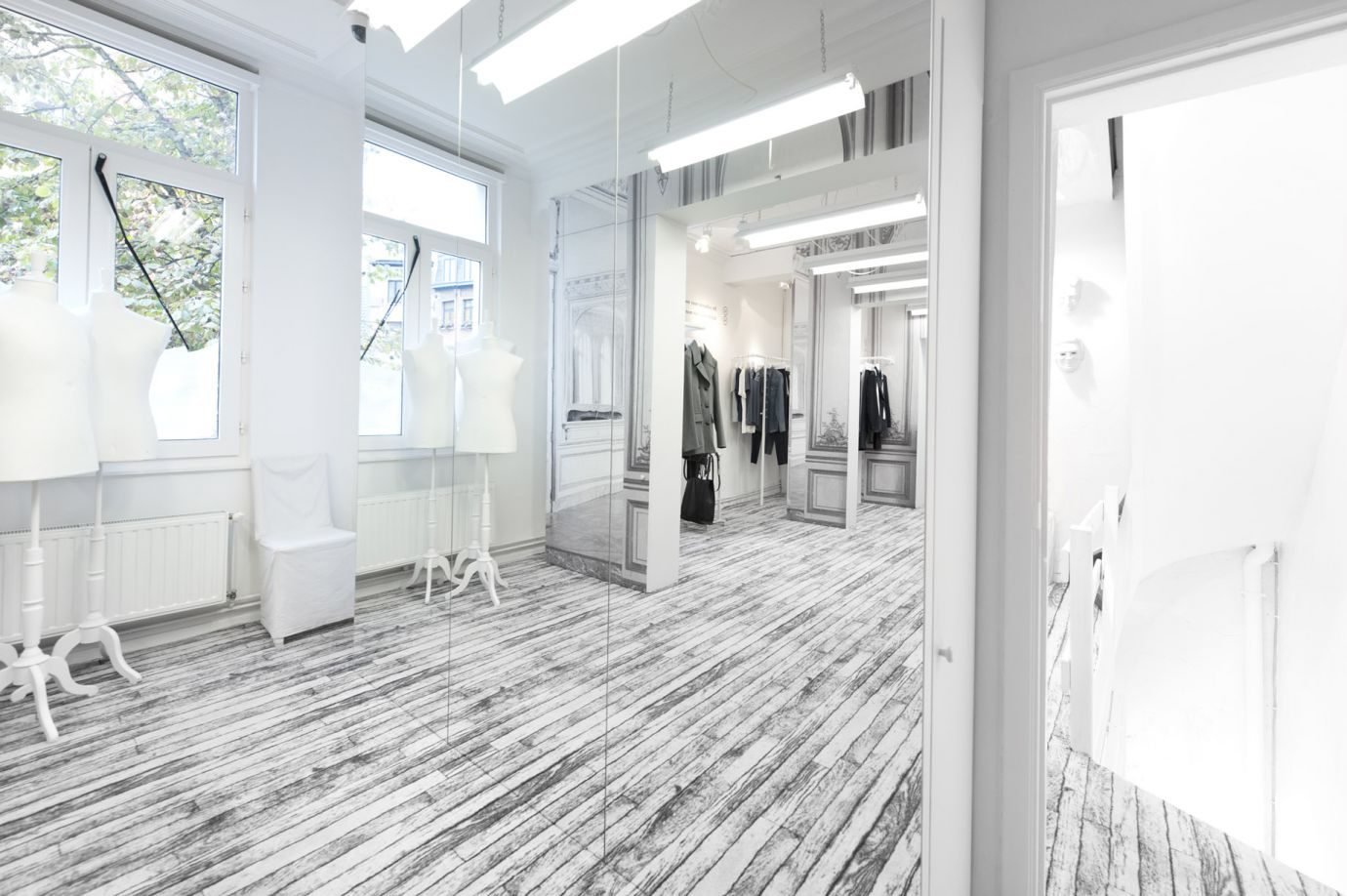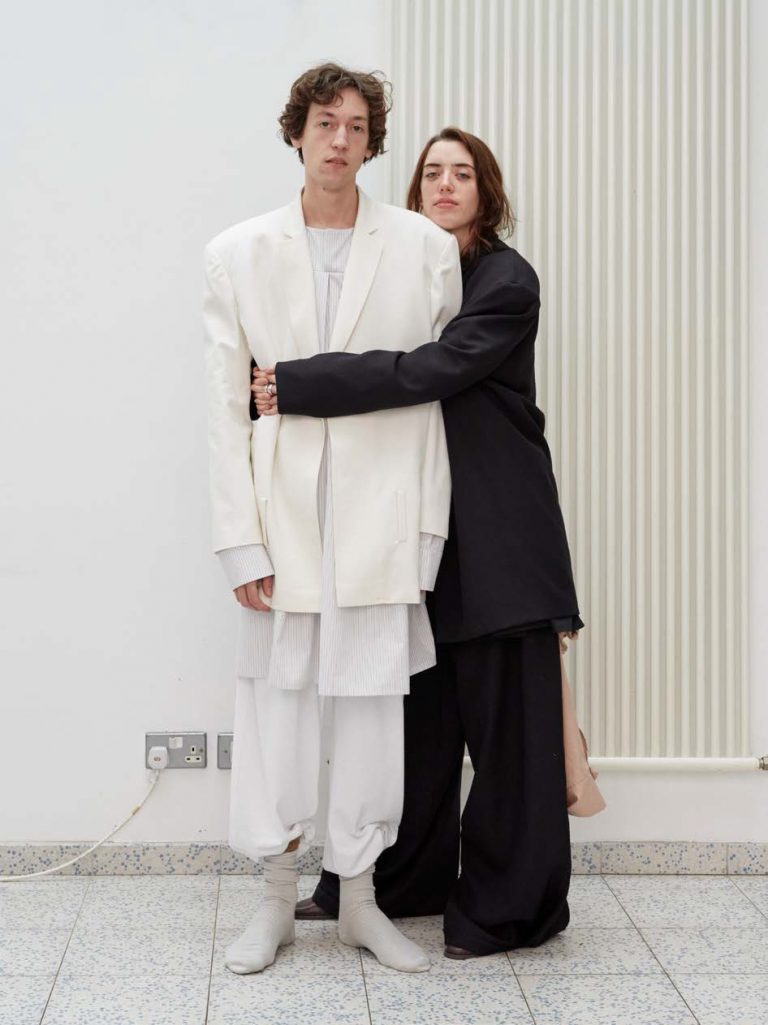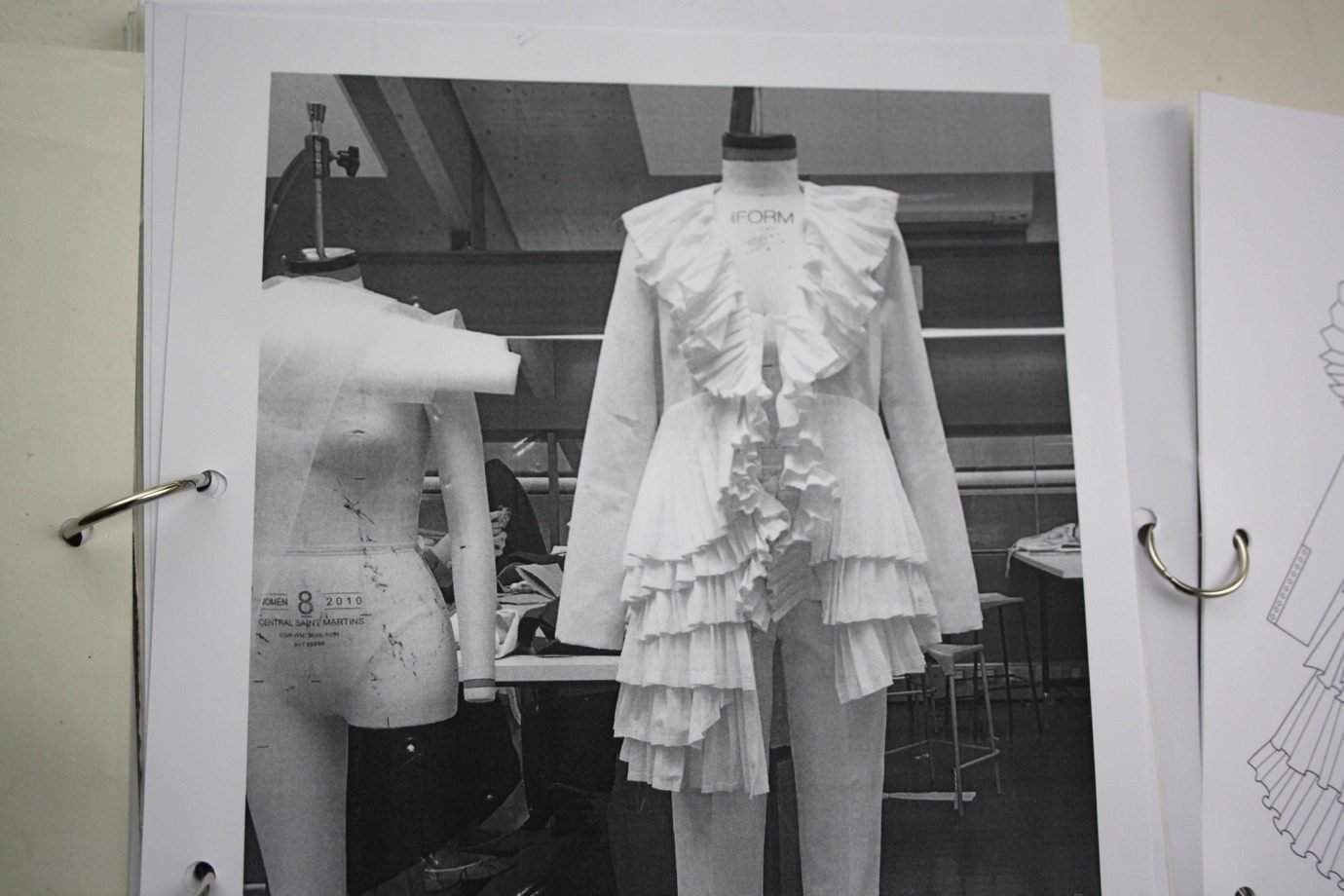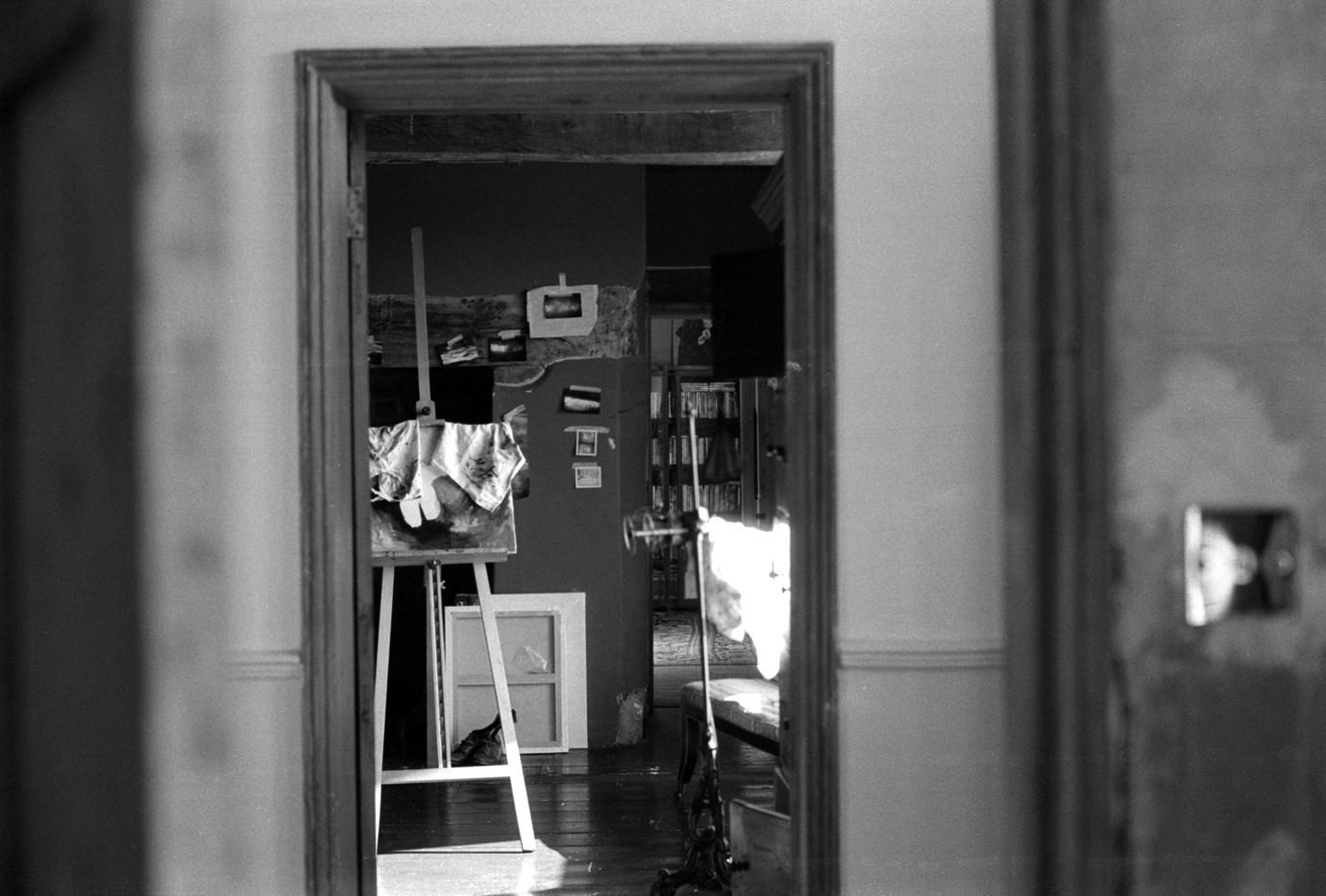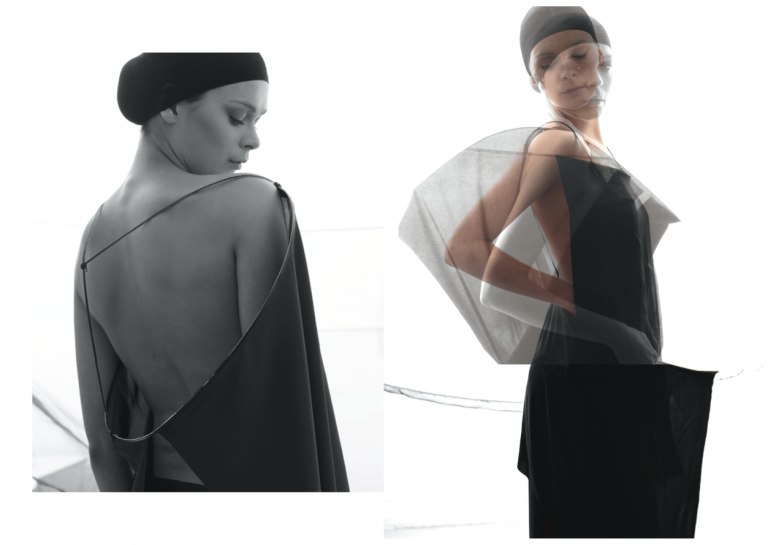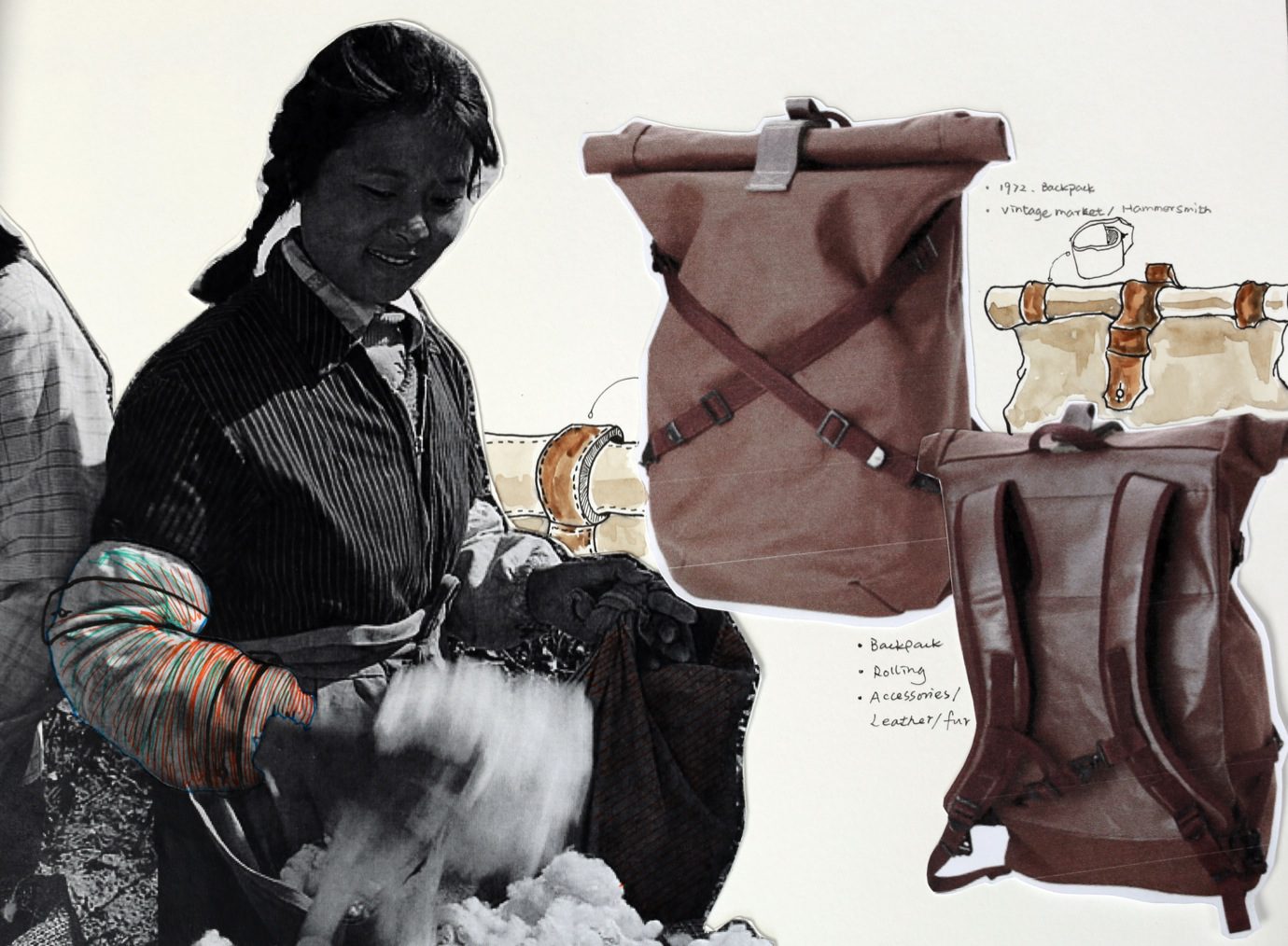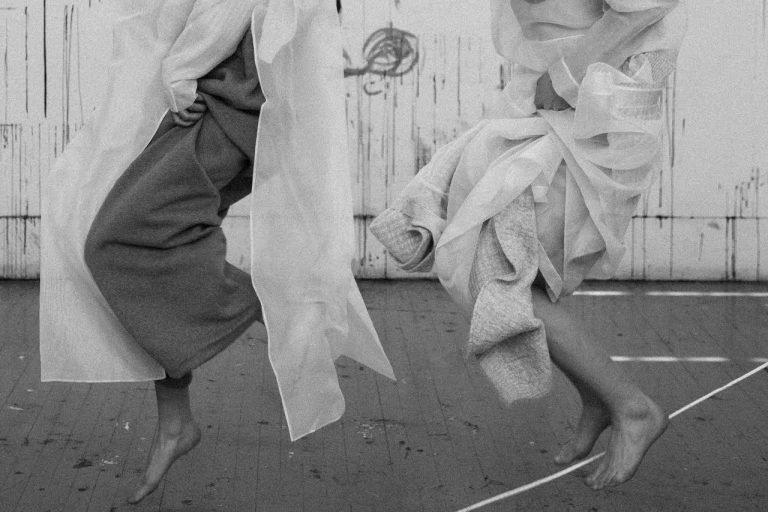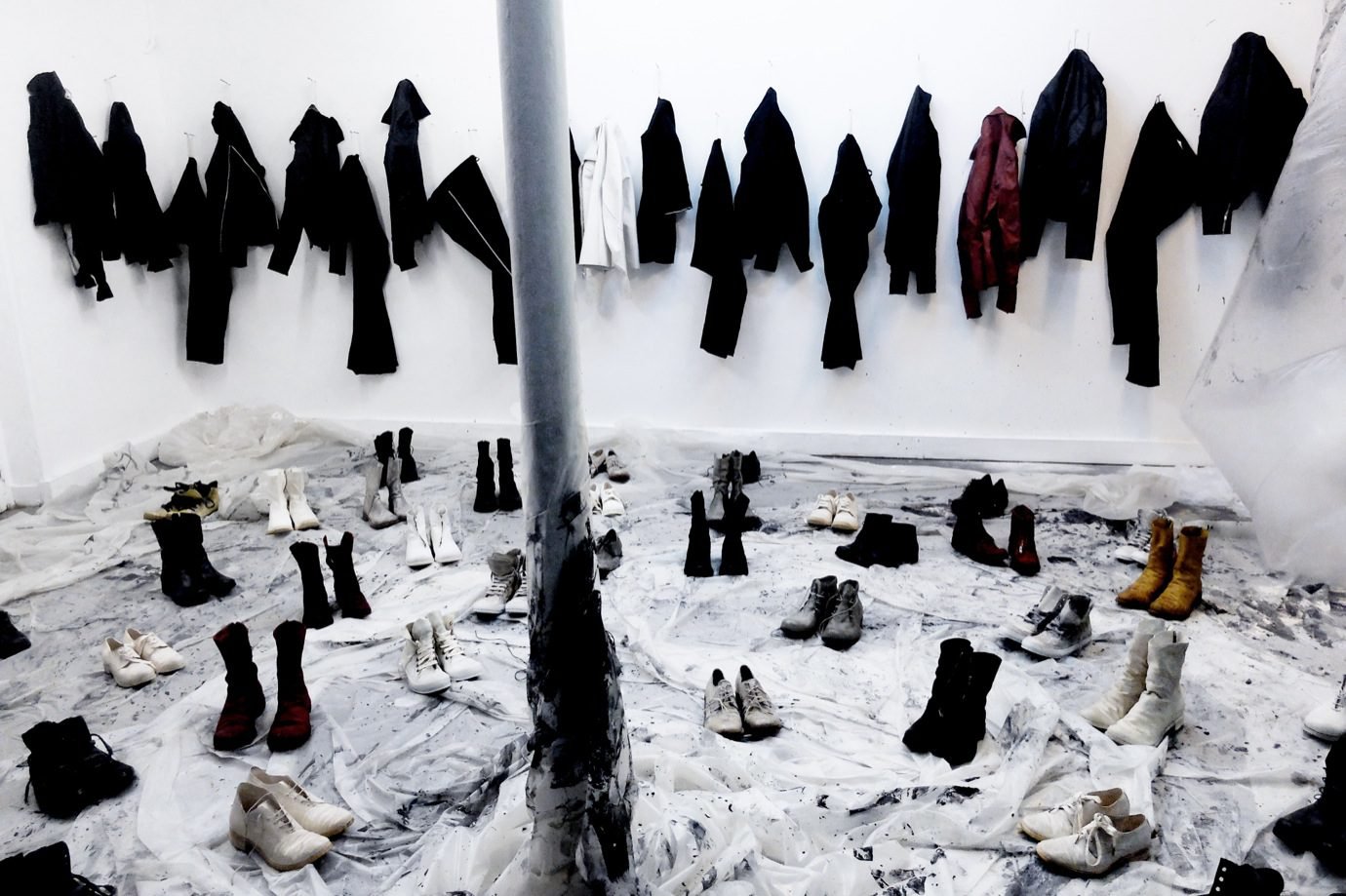The show’s title I Am So Tired is befitting. The final open studio before the degree show means that tensions are running high; yet the studios are awash with purpose, and students hurry around with white paint, hammers and spirit levels. Tiredness isn’t slowing anyone down, and with less than eight weeks until the degree show, determination to curate a successful open studio is evident. The diversity of mediums within Fine Art makes for a well balanced exhibition of wall-based, floor-based, spatially-aware and fourth-dimensionally positioned artworks. Finished work and works-in-progress sit alongside one another. A bar selling cheap booze and a custom-made karaoke booth makes for great entertainment, and the studio houses live performances throughout the evening.
As the final year students of BA Fine Art come together to host their last open studio before graduating, an opportunity to both showcase their work to their fellow students and peers while raising money for the ever-impending degree show, we took the chance to catch up with some of the students involved.
Nikoleta Christoforou
Nikoleta Christoforou’s practice revolves around balance; executed through tone, form and structure. She uses colour theory to dictate the palette, and through these elements she seeks to create a depth and distortion to her work. For this piece, nine small canvases make up one large, square painting; a clever way to combat the neurosis she feels toward working on a grand scale. The use of the nine paintings pieced together also adds to the sense of distortion, and each painting has the possibility to be re-arranged to create an entirely new work. Influenced by 1960’s art and the Op Art movement of this era, Nikoleta works with paper collages, arranging shapes and patterns to be later translated into paintings. The interior of envelopes, with every country having its own unique version, has become another source of research, where the deconstruction of the unusual folds again aid as a source to be interpreted into her own style.
Phil Whittle
Phil Whittle examines how the expanse of data in our digital universe is changing us; how it’s creating an abstract and absent human being in itself, and how the world around us is losing a tangible presence due to our unrelenting interaction with the digital world. Phil believes that we are becoming passive to our physical surroundings, where they now seem as virtual as the virtual platforms which we interact with so ubiquitously. We now encounter every space through laptops, phones and other digital technologies, rather than experiencing it as our corporal self. “We’re constantly assaulted with hyperlinks and clickbait, so you never develop a full understanding of the one thing you’re actually looking at. This is how we now interact with the concrete physicality of the real world.” Avoiding the formal notion of hanging his work on the wall, a plasma screen is positioned on the floor and rested against the wall. Phil’s film is a looped, 1 minute and 38 second long satirical piece. A tortoise ambles along a pavement, with the phrase, “Really useful knowledge” flashing repeatedly across the screen; nothing else happens, but nothing else needs to happen for the simple message to be conveyed. Phil’s practice is entirely virtual, using only found material pulled from the infra-sphere.
Julia Ironside
Situated in drawing and casting, Julia Ironside’s work deals with feelings of longing and loss. Beginning with a bouquet of flowers gifted to her by a friend, she embarked on memorialising friendship and what it means to her. By creating castings from the flowers, and subsequently creating drawings from the castings, the processes involved constructing a poetic conversation about the fragility of life. Her drawings, which are rubbings of the castings, gesture a landscape that echoes the earlier life of the flowers from which the castings were created. The ceramic moulds make something ephemeral become concrete, yet they still maintain the delicate facet that Julia’s work seeks. Combining nature and friendship, and the fragility and importance that, for Julia, each of these encompass, her practice appears both therapeutic and meditative; where drawing provides her with a sense of tranquility and escape. Influenced by her rural, idyllic childhood and a longing for green space, Julia brings materials from the natural world into the university space to draw our attention to their ephemeral qualities, while, paradoxically, preserving them. The university’s grey, concrete building and London’s matching skyline are mirrored in Julia’s minimal colour palette, where the anxiety that the building provides her has instead invested itself in her practice.
Alexandra Gribaudi
The mundane everyday provides Alexandra Gribaudi’s work with structure; getting the tube, going home to her boyfriend, cooking dinner. Everyone’s everyday is her source of fascination. Creating her own version of a domesticated setting in the studio, Alex recycles her work, so that drawings from two years ago become ornaments on top of a filing cabinet, and last year’s paintings become what she describes as her ‘babies’; small, floor-based sculptures. A shelf is home to organised scraps of ready-to-use metal, and on the floor is a further pile of large, discarded sheets of metal. Safety gloves are left on the floor as an indication of the labour involved, and the metal workshop’s ‘scraps bucket’ has been incorporated into the sculpture itself. All of the materials used are scrapped and found metals, where she applies heat to artistically alter the surface colour. Alex’s large sculptures are very self-aware, demanding a great presence; to an audience, they signify strength and power. Being a woman is very important to Alex and her practice, in which she challenges stereotypes through the physicality of the sculpture; the fact that these huge sheets of metal are too heavy for her is a part of her practice, and one which she seems to relish.
Hauyu Yang
Hauyu Yang’s work revolves around the idea of communication; when conversing between languages, he believes that you can never truly convey your exact thoughts and meaning, and prefers the use of emotion, gestures and movement to more suitably convey these. In his performance, water symbolises language, where the water travelling between two people’s mouths acts as the conversation. Hauyu regards language as a fragile matter, and where water takes on the role of communicator, the language is strengthened. Rehearsals or scripts are unnecessary, as it is the unrehearsed everyday which he hopes to gesticulate with his work.
Gabrielle de la Puente
Gabrielle is a truly polymorphic artist who very recently buried the idea of producing any more internet art, and contributed to the open studios with a performance on a vivid childhood memory that, in reality could never have happened. “A very personal, strange and almost embarrassing experience, when my sister and I were younger and pulled the curtains of our windows aside, seeing a cartoon bee outside pulling a face at us.” Pyomyositis evolves around the question what this fertile philosophical moment might mean, and how we can overcome awkwardness by talking about it.
Her formula for her art work can’t yet be defined as such, but every piece of her work begins with text. She’d had a lot of experiences of going into art galleries and feeling bad about not getting anything, which is the reason she never works with elusive sculptures. “My issue is that I always want to say something. I want people to get it and feel comfortable. I don’t want people to leave feeling stupid. You need to be generous enough in the work for people to get it.”
One can see that she puts a lot of emphasis on conversation, exchange and discussion that reaches further beyond the art and design world. “I appreciate that sometimes you might want to be self indulgent, but I feel like I’m not going to have that privilege. I come from a working class family, and it would mean that I couldn’t go home and talk about the work that I’m doing. I want to be able to have this discussion not just with other artists, but with my family, friends studying politics, chefs, florists. It is to expand the conversation of what it means to make art.”


